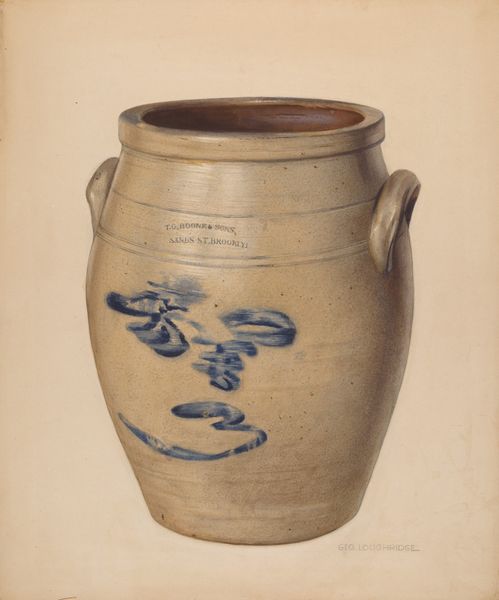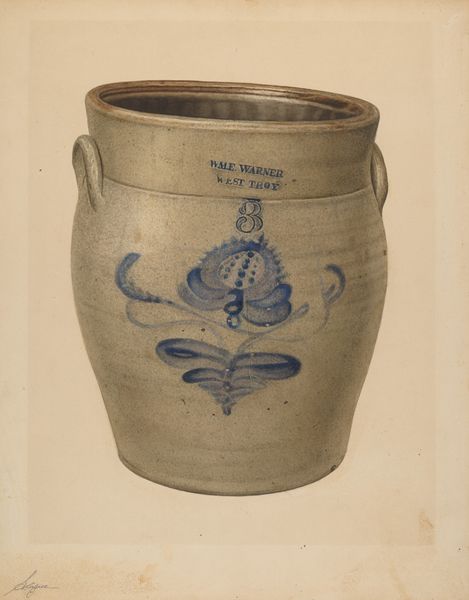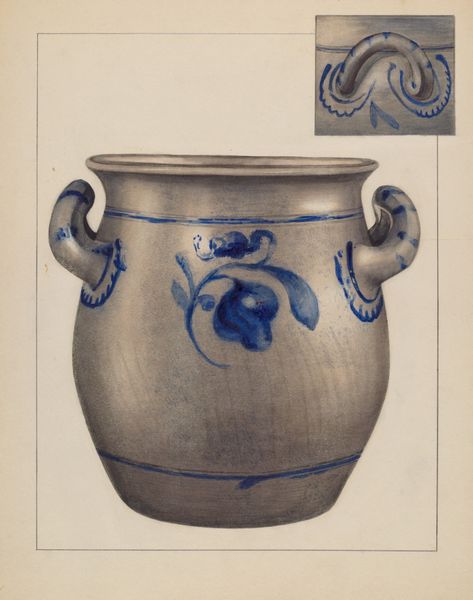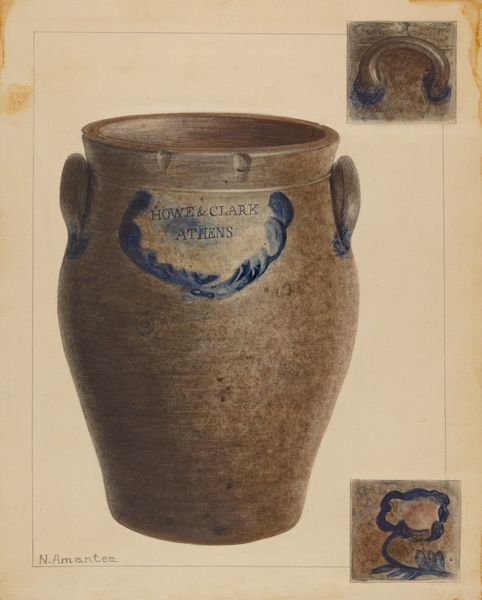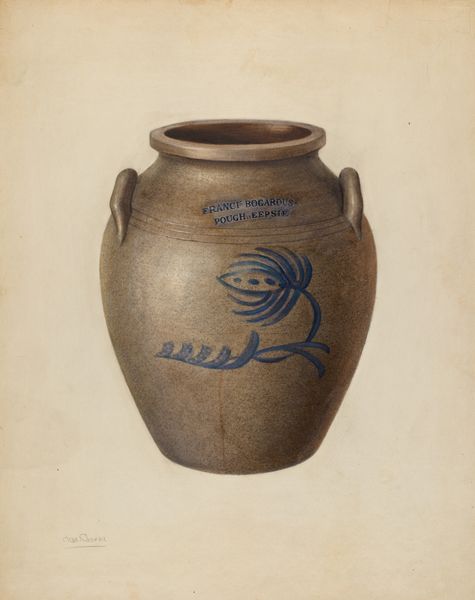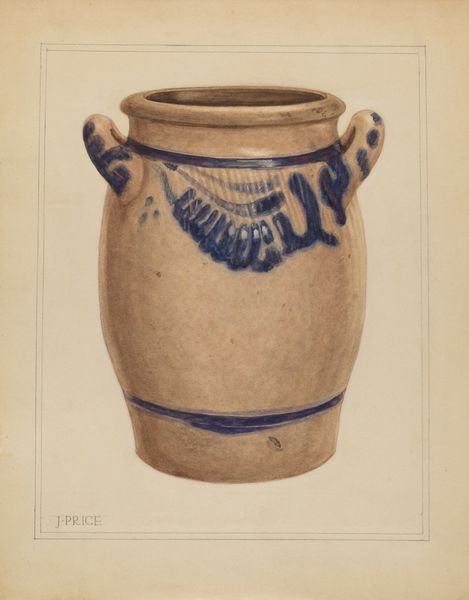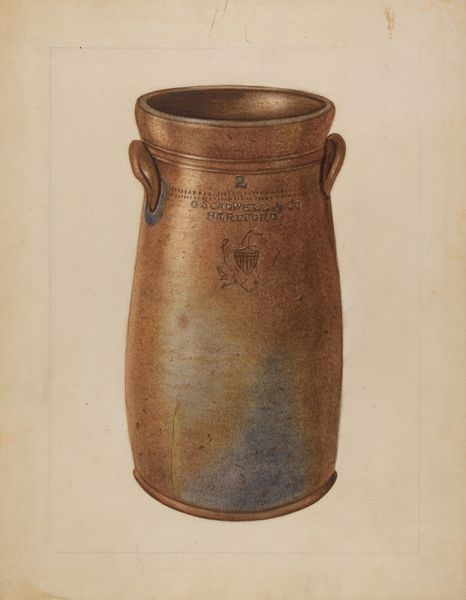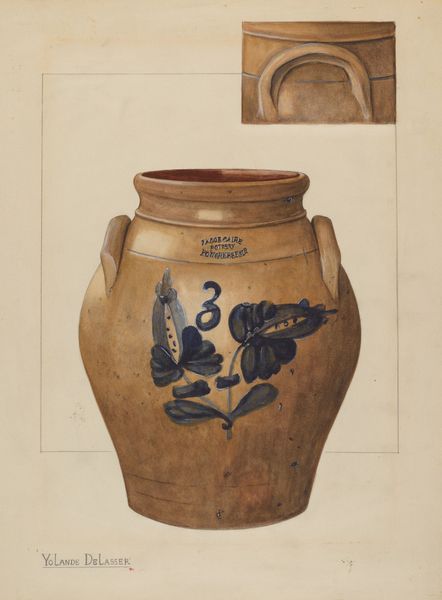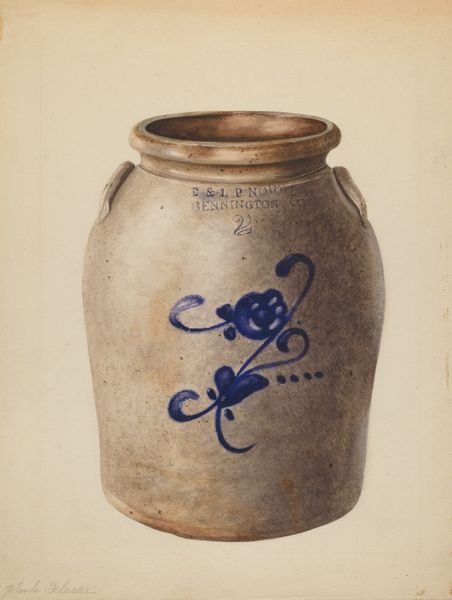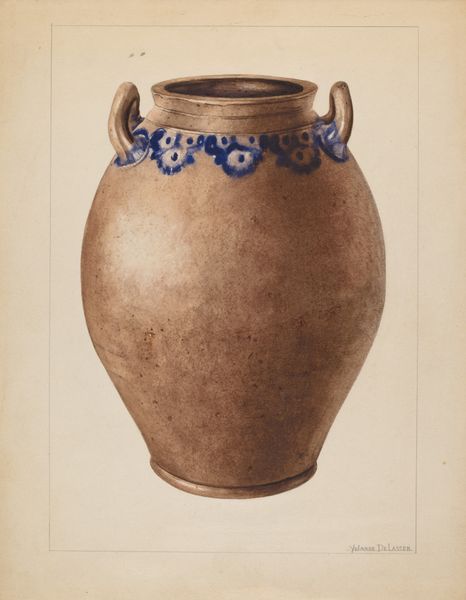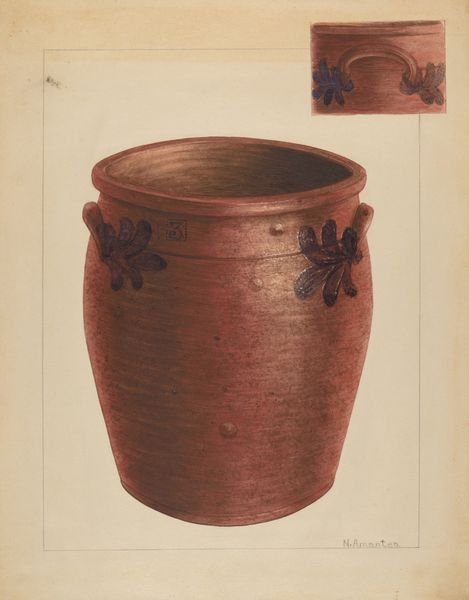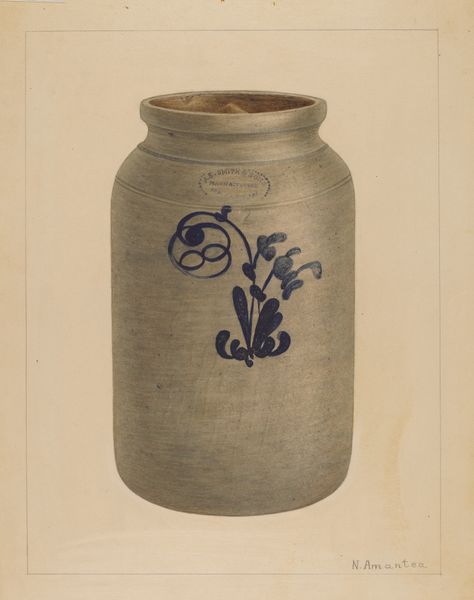
drawing, watercolor
#
drawing
#
watercolor
#
watercolour illustration
Dimensions: overall: 29.9 x 22.5 cm (11 3/4 x 8 7/8 in.) Original IAD Object: 11 1/8" High 8 1/8" Dia(top)
Copyright: National Gallery of Art: CC0 1.0
Curator: What a wonderfully humble, straightforward depiction. I find myself immediately drawn to the way the artist captures the weight and volume of the object, its stillness, through watercolor and drawing techniques. Editor: Indeed. This rendering of a crock, circa 1936, by Nicholas Amantea, speaks volumes about utility, doesn't it? Look at the textures implied – the rough stoneware, the smooth interior – it evokes the tactile experience of handling this functional piece of pottery. I can almost feel its weight and hear it clinking against other crocks! Curator: Precisely! The artist focuses our attention on form and line. The cropping of the vessel isolates the pure geometry – a subtle curve culminating in the perfect symmetry of the opening. The supplementary handle close-up reinforces the idea that structure dictates function, doesn't it? The handle becomes more about the curve and the plane than how you would hold it. Editor: Right, though that handle, in particular, brings forward a story. These vessels were essential to food preservation. Notice the inscription, "L. Seymour Troy"? It directly ties this artwork to local production practices and the individual labor that went into making everyday household items accessible through a regional supply chain. Curator: The understated palette—brown, beige, with a subtle use of blue—seems crucial to the composition. What emotional tenor do you get from those specific tones, or even hues? Editor: For me, the glaze almost speaks of an archaeological dig, or that it came right out of the earth; in the blue writing I notice the passage of time as it appears somewhat worn or softened in tone. But those visual effects point to how labor and production create meaning. Someone crafted this, someone owned it, and someone depended on it. It emphasizes how crucial objects are to telling those kinds of stories. Curator: It appears we arrive at two distinct yet interwoven readings of this piece. I find its formal presentation almost elevating an item that had to serve simple purposes, which now offers insights to larger forms. Editor: Absolutely. By observing materiality and context, we’ve traced lines from clay pit to the artist’s hand to home – a reminder that beauty and history are often found in the ordinary, ready to be uncovered when we consider its production and lifespan.
Comments
No comments
Be the first to comment and join the conversation on the ultimate creative platform.
